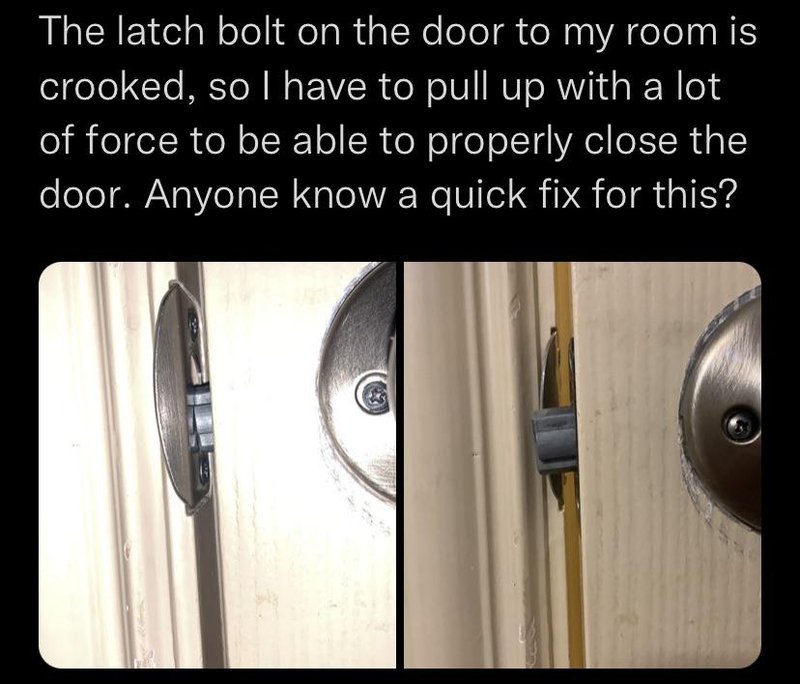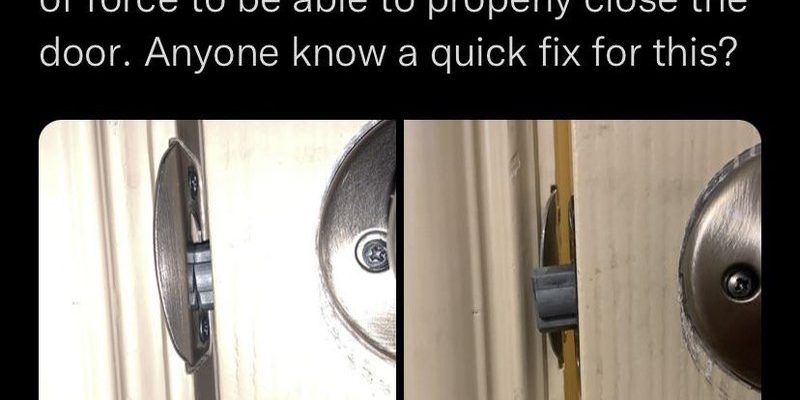
This door knob catch is quite common, and understanding why it happens can save you a lot of time and trouble. Whether it’s the door to your home, an office, or even a storage shed, these little mechanisms can be quite temperamental. Let’s explore the reasons behind that annoying catch and how you can possibly fix it.
Understanding the Mechanism of a Door Knob
To get to the root of that catch you’re experiencing, it’s helpful to know how a door knob works. At its core, a door knob is designed to operate a latch or bolt mechanism. When you turn the knob, it should disengage this latch smoothly, allowing the door to open freely.
However, various factors can affect this process, leading to that frustrating catch. You might think, “Is it the knob itself?” or “Could it be something in the door frame?” Indeed, the answer often lies within the mechanics of the knob or the door itself. A proper understanding of this mechanism can enlighten the troubleshooting process.
Common Causes of the “Catch” in Door Knobs
Now that we have a basic understanding of how door knobs operate, let’s dive into the common culprits behind that catch. Here are the most frequent issues you might encounter:
- Misalignment: Over time, doors can sag or settle. This can cause the latch to not align properly with the strike plate, resulting in resistance when turning the knob.
- Worn Out Components: The internal parts of the knob, like springs or pins, can wear down, leading to inconsistent operation.
- Debris Build-Up: Dust and dirt can accumulate inside the knob mechanism, obstructing smooth movement.
- Humidity Effects: In areas with high humidity, wood can swell, misaligning the knob’s operation due to expansion.
Recognizing these causes can help you narrow down what might be happening with your door knob.
Troubleshooting a Catching Door Knob
If you’re dealing with a door knob that has a catch, here’s a simple troubleshooting guide. You don’t need to be a handyman to follow these steps!
1. Check for Misalignment:
– Close the door and look at the latch and strike plate. They should line up perfectly. If they don’t, adjust the hinges slightly or use a screwdriver to shift the strike plate.
2. Inspect the Door Knob:
– Remove the knob and check for wear and tear. Look for rust or any broken components. If parts are damaged, it may be worth replacing them.
3. Clean the Mechanism:
– Sometimes, all it takes is a good cleaning. Use a bit of compressed air to blow out dust and dirt from the knob. If necessary, a small drop of lubricant can help, but avoid over-lubricating as it may attract more dust.
4. Check the Humidity:
– If you live in a humid area, monitor your door’s moisture content. You might need to sand down parts of the door or knob slightly to accommodate for any expansion that has occurred.
Following these steps can often resolve the catching issue without the need for professional help.
When to Seek Professional Help
Even after troubleshooting, you might still face problems with your door knob. Here are signs that it might be time to call in someone who knows their stuff:
– If you notice that the latch is damaged and no longer engages the strike plate correctly, it might need replacing.
– If you’re not confident in your DIY skills, professional locksmiths can help avoid further damage.
– If the door itself seems warped or out of shape, that might require more than just a simple adjustment.
Getting professional help can sometimes be the best way to ensure you don’t create additional headaches down the line.
Preventive Measures to Avoid Future Issues
Once you resolve that pesky catch, you’ll want to keep it from returning. Here are a few tips to help maintain smooth door knob operation:
– Regular Maintenance: Periodically check and clean your door knobs. A small routine can go a long way.
– Humidity Control: Use dehumidifiers in areas susceptible to moisture. Keeping humidity levels stable can prevent swelling and misalignment.
– Proper Installation: If you install new knobs, ensure they are correctly aligned from the start. A professional can ensure everything is fitted correctly.
Taking these steps can extend the life of your door knob and keep it working smoothly.
So, that little catch in your door knob isn’t just a nuisance; it’s a sign that something’s amiss. Understanding the mechanism and common causes can give you the power to troubleshoot and resolve the issue yourself. Whether it’s a simple misalignment or dirt build-up, with some patience, you can keep your door knobs operating smoothly.
Remember, regular maintenance and being aware of environmental factors can help prevent future catches. By addressing these small issues now, you can avoid bigger problems later. So, the next time you encounter that catch, don’t feel frustrated. Just think of it as a little mechanical hiccup that you’re now equipped to handle!
